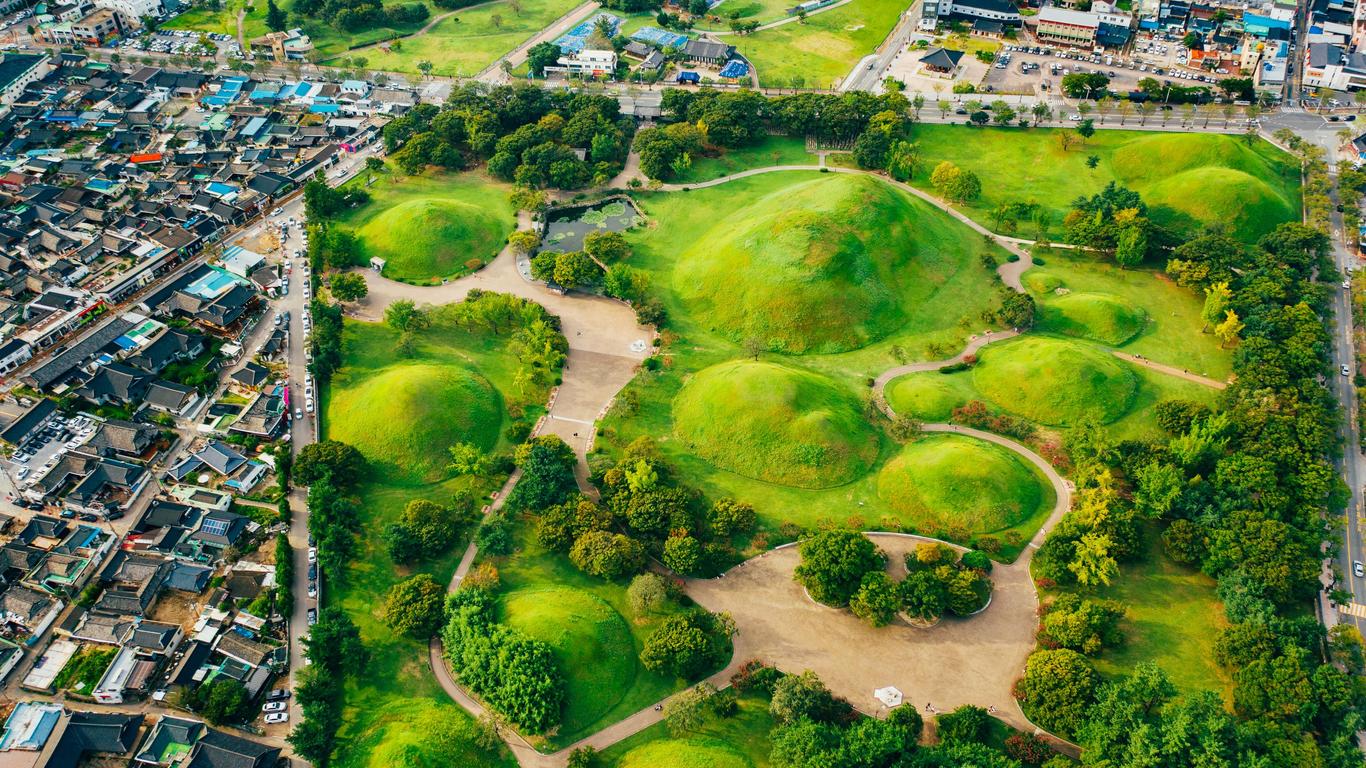Visitors who wish to see temples, pagodas, statuesque Buddhas and rock carvings will adore the city of Gyeongju in South Korea. The city is sprinkled with regional architecture, colourful rooftops and is surrounded by rolling mountains and picturesque national parks.
There are many wonderful examples of historic architecture in Gyeongju, perhaps one of the most prominent is Bulguksa, an ancient Buddhist temple with two pagodas. It may be a 40-minute bus ride to the temple, but it is worth the trip to see the unique carvings, architecture and pretty gardens. The Gyeongju National Museum is the ideal place to explore the cultural history of this area. With over 3,000 ancient artefacts on display and 100,000 in total, travellers can view Buddhist sculptures, jewels and the exquisite artworks from the Silla period. For a more interactive experience visit Gyeongju Yangdong Village, the largest traditional village in Korea. This cultural heritage site is set in scenic surroundings and hosts many national treasures and items of folkloric value. Mount Seolchangsan can be seen from here, with quaint thatched cottages dotted along the valley that offer a rare glimpse into traditional Korean life. A fun day out can be had at Bomun Tourist complex, open all year round with a lake, golf resort, drive in theatre and shopping mall to enjoy. Walk along the lakeside, take a dip in the hot springs and during Springtime admire the pastel pink petals of the cherry blossom trees.
The best way to get around Gyeongju is on foot or by bicycle, and can be rented at a reasonable rate per day. It’s a difficult city to get lost in, as many of the local attractions are close to one another. Further afield, Bulguksa Temple can be reached by bus. A trip to Seoul is also easy from Gyeongju train station on a high-speed train that takes 3-hours compared to the slower option with more stops along the route. Local airports in Busan and in Ulsan are an hour from Gyeongju via the express bus service.
Gyeongju is a coastal city that was once the capital of the Silla Kingdom. In 668 AD, the city became a centre of cultural and political life in Korea, and became home to the Kingdom’s elite and its judicial system, becoming incredibly prosperous as a result. Today, Gyeongju is still growing as a major tourist destination for foreign travellers and South Koreans who are interested in discovering more about the Silla heritage and exploring the beautiful mountains, lakes and temples.





